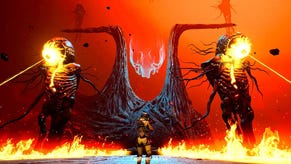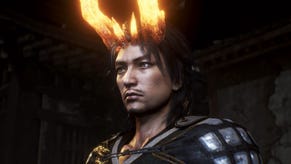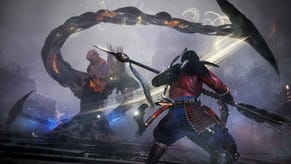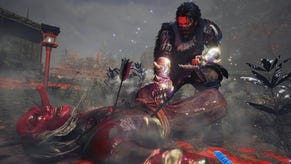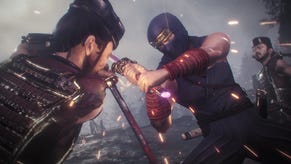Nioh 2 Review: Dying is the Great Unifier
Team Ninja delivers a Souls experience with a heaping handful of options obfuscating the sublime combat.
This article first appeared on USgamer, a partner publication of VG247. Some content, such as this article, has been migrated to VG247 for posterity after USgamer's closure - but it has not been edited or further vetted by the VG247 team.
There's an old Japanese proverb: "Though the wind blows, the mountain does not move." I've always envisioned Dark Souls and its offshoot brethren as that mountain, an immovable monster looming over you, with pure tenacity as your only hope of summiting it. For some, the act of toil, of suffering and faltering until everything clicks and falls into place, is what they love most about Soulslikes. I've only occasionally been hooked by the feeling, in faster, more immediate games like Bloodborne or Sekiro: Shadows Die Twice.
Nioh 2 takes a good shot at trying to win me over. It takes place in a haunted, twisted version of Japan's Sengoku era, where you're cast as "Hide," the powerful offspring of a human and a yokai. Together with a wandering magic stone hunter named Tokichiro, it's up to you to scour the countryside for magic stones, kill yokai, and meet some of the biggest notable figures in Japanese history. Nioh 2 is ultimately the story of Oda Nobunaga and Toyotomi Hideyoshi ending the Sengoku era, if everyone around them had Pokemon-like Guardian Spirits.
The plot is wholly secondary to the game though, as Nioh 2 relies almost entirely on its combat. I never played the first game, but Team Ninja is the developer behind Nioh and its sequel, and it's clear that at least some of the folks behind the Ninja Gaiden titles from the 2010s made their way over to this team. There's a precision and speed to movement and attacks that reminds me of Ninja Gaiden to a certain degree, but far expanded. And considering I loved that series, Nioh 2 has an excellent foundation to work with.

You have a total of nine weapons to play with in Nioh 2: katana, dual blades, axe, spear, odachi, tonfas, hatchets, kusarigama, and the odd switchglaive. Each weapon has its own rhythm to it, from the straightforward beat of the katana's strikes, to the high-speed staccato pops of the hatchets and sweeping booms of the axe. There's a wonderful fluidity to every weapon, and they all feel excellent; even the ones outside of my personal preference.
You'll generally play moment-to-moment with two weapons at a time. I personally stuck with the faster dual blades for melee encounters, and the long reach of the odachi for most boss fights. Each weapon can be wielded in High, Mid, or Low stances, which offer different combos and push you toward more damage or improved dodging. As I settled into Nioh 2, I found myself using the High stance to push my advantage, while switching to the dodge-heavy Low stance if I was afraid of a foe.
Every encounter in Nioh 2 is a balance between effectively using your tools and developing a strategy to take on your foes. Do you launch into an opening combo of light and heavy strikes at the risk of not having enough stamina to dodge? Maybe instead you might lean on a ranged weapon to poke at your enemy's defenses, or whittle down their stamina with a heavy weapon like an axe, opening them up to a high-damage grapple finisher while they're stunned. Nioh 2's combat is fast, but methodical; attack, defend or dodge, and riposte. Many of your deaths will come from overcommitting to an attack, while not having the full picture of your enemies' capabilities.
My early hours with Nioh 2 were about learning the ropes; missing the ability to parry I got used to in Sekiro, understanding the timing of boss' attacks so I could dodge them. I often made the Dark Souls mistake of dodging backward, rather than staying in melee range. Enemies can taint a region, preventing your stamina from regenerating and requiring you to use a timed Ki Pulse mechanic to purify it. With the timing of the review embargo breathing down my neck, the learning curve was frustrating in the beginning. You can't summit the mountain until you learn to climb.
The difficulty in Nioh 2 stems largely from the high damage coming from your foes. If an enemy hits you with a glowing red Burst Attack, you can find yourself dropping dead if you're sitting at 75% health. Combined with a limited number of healing items, the tension is felt in every single hit you take. Your toolset means you can always get away or respond to incoming attacks. Fights against a new foe are slow, as you play defense to learn, but once you've learned their moveset, you can find yourself dispatching foes quickly. Flipping from learning to understanding and executing makes you feel smart and in control, which I always find to be a satisfying feeling. If you get too cocky though, damage can pile up quickly, and you'll find yourself dying against pushover enemies because you weren't taking your time.
While Nioh 2 is hard, it extends a hand to help you in several different ways. (Thank you, Team Ninja.) There's the Yokai Shift, which changes you into three alternate forms: the staggering Brute, the lightning-fast Feral, or the ranged Phantom. Not only can you change to one of these forms when you fill a meter, there's also the Burst Counter, a timed maneuver that can get you out of range of an attack or interrupt an enemy's powerful Burst Attack. The Burst Counter is damn near necessary in later levels, but you can also use it to save yourself from being out of stamina.
As you kill yokai, you'll occasionally get their Soul Cores, which you can equip to gain their abilities. These moves sit just outside the normal attack rotation, allowing you to push forward and get yourself out of a bind. Then there are the skill trees, which are not only spread between Samurai, Ninjutsu, and Omnyo magic competencies, but also each of the nine weapons. The trees themselves are spread out with dozens of abilities, and it's actually a bit overwhelming as someone who hadn't played the first Nioh. That parry I was missing? Many, many hours into the game, I found it as a skill in the Katana tree; there was no indication that it was an ability at all, and since I hadn't used the katana early on, I missed it. Once I had it, my experience greatly improved. I wish the game's tutorials had pointed it out earlier.
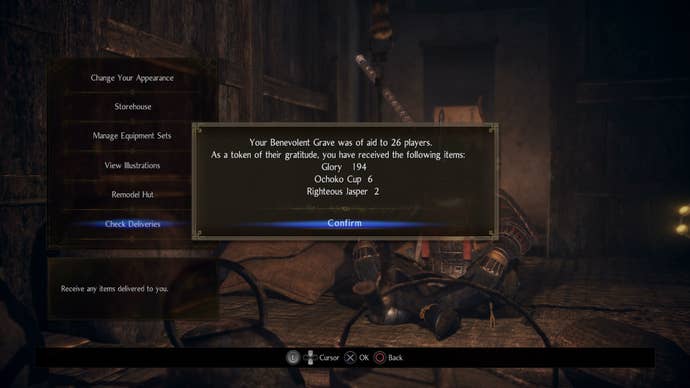
But wait, there's more! There's an extensive crafting system that lets you make, dismantle, and upgrade your weapons. A Familiarity system means the more you use a weapon, the more damage it does, and there are special tainted weapons that can do more damage after they've fed on enemies for a bit. You can summon hostile AI-versions of other players from red Bloody Graves, and when you defeat them, they have a chance to drop whatever gear they're wearing; or you can summon blue versions that will help you in battle.
Finally, you can simply summon players into your mission. I found this would rarely work during the review period, as I was only able to summon other players three times during my playthrough. I think that'll change once Nioh 2 is widely available though, at which point a struggling player will likely have no trouble finding very helpful friends online, similar to summoning Japanese ringers to help in Monster Hunter: World.
If the past few paragraphs sounds like a lot, that's because it is. In its desire to help, Nioh 2 piles on systems that you can use to overcome your obstacles if you're not a dodge-and-combo master. Compared to the simplicity of FromSoftware's Bloodborne or Sekiro, the underlying systems of Nioh 2 add a lot of complexity to the experience. Nioh 2's base combat is a speedy thing, but Nioh 2 as a whole is a lumbering, bloated one-eye oni.
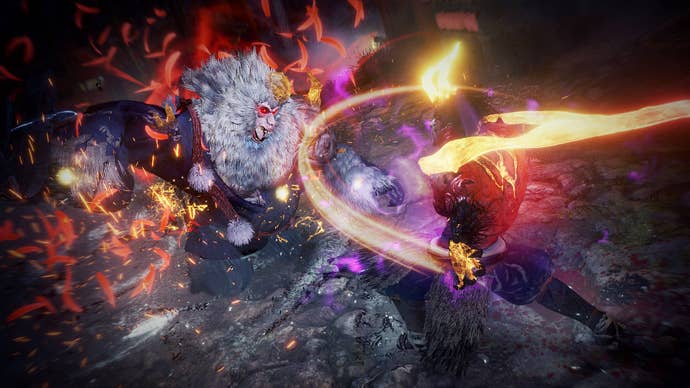
I also find that I'm mixed on the mission structure and how it interacts with the level design. Each mission takes place in a discrete map, but there are issues inherent there. Since Nioh 2 isn't a single, cohesive world, I'd prefer if it took bigger swings in terms of the environmental design and aesthetic. There are some wonderful highlights here and there—like when you step into the Dark Realm—but there's also a lot of standard villages, forests, and caves to be found in Nioh 2.
On top of all that, many of the levels are actually pretty linear, with alternate branches generally closed off by doors that can only be unlocked from one side. Opening these paths helps if you're stuck in a mission, dying over and over again, but those paths are closed again if you revisit that mission. If you're slamming your way through a mission without any deaths, it's actually more efficient to forgo these doors.
Still, I'm a huge fan of the moment-to-moment combat, especially once you settle into a set of weapons that speaks to you. While there's some systems bloat, when you find the right combinations of weapons, armor, and skills, you can feel amazingly badass. But those layers upon layers of systems are very daunting, a deluge of interconnected stats and buffs, and the levels themselves feel like they could be visually stronger. Nevertheless, it's a testament to Nioh 2 that a game that initially put me off eventually grew on me. I can see why players want to climb this mountain, even if I'm probably not buying into the Dream of the Strong myself.
ConclusionNioh 2 crafts its tough experience with precise, delicious Team Ninja combat. On top of that is an entire mass of additional systems that offer players a way forward if your skills aren't top-notch. When those systems come together, Nioh 2 can make you feel powerful, but it does feel like a mess of numbers and bonuses thrown your way at times. You're surprisingly versatile, but you're also forced into a lot of management. A bit of trimming would've led to a near-perfect experience, rather than just a great one.
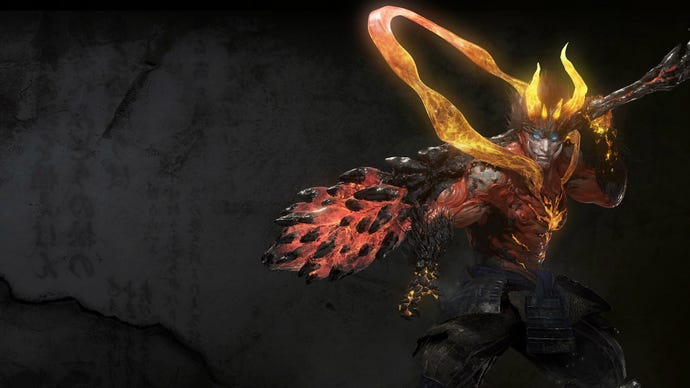


.jpg?width=291&height=164&fit=crop&quality=80&format=jpg&auto=webp)
